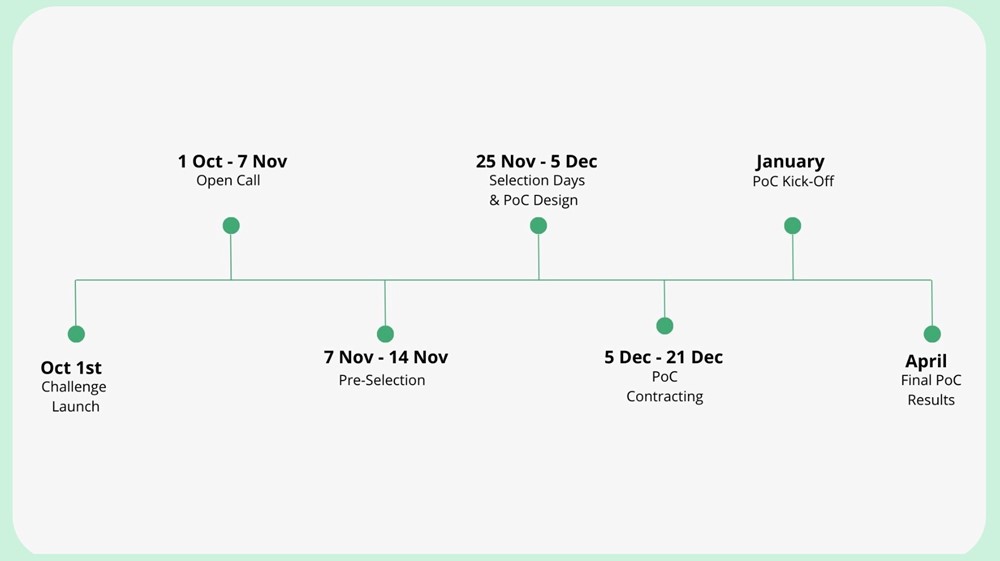
Topic 1: Extreme Weather Events Diagnostic and Forecasting tools for the Control Room
Submit your technology for Extreme Weather Events Diagnostics and Forecasting tools for the Control Room
📅 Final Submission Date: November 7th, 2025
Join the open innovation call of the TSO innovation Alliance
*Create an account on Rethinking Energy to Apply
Topic 1: Extreme Weather Events Diagnostic and Forecasting tools for the Control Room
Context
Extreme weather events introduce significant operational risks for grid infrastructure and system operation. Traditionally, system security has been assessed using deterministic approaches such as n-1 and n-2 contingency checks, which rely on fixed assumptions and conservative safety margins. While these methods remain important, they are increasingly insufficient for decision-making under uncertainty, such as during extreme weather or rapidly changing grid conditions.
Transmission System Operators (TSOs), and especially control room teams, are now being called upon to not only maintain system security under these conditions, but to do so with greater foresight, flexibility, and speed. Extreme weather risks are no longer edge cases; they are becoming operational realities. This new landscape demands a shift from reactive management (responding to events as they unfold) to a proactive or preventive, data-informed operational paradigm. While TSOs already implement proactive practices, the increasing frequency and severity of extreme weather events requires these practices to be further strengthened. To support this, operators need tools and technologies that can provide early warning signals, probabilistic impact assessments, and actionable insights tailored to the operational context—at time horizons ranging from a month ahead to real-time.
The topic question is:
We are seeking to test and validate innovative technological solutions that combine weather data, grid measurements, and ML to support operational decision-making under extreme weather conditions. These tools will be piloted in realistic, live-like environments through proof-of-concept (PoC) projects.
The goal is to identify solutions capable of detecting, forecasting, quantifying and communicating the operational impact of specific weather events on the grid, with a demonstrable benefit for both day-ahead planning and real-time interventions in the control room.
The following high-impact weather phenomena relevant to European grid operations, including but not limited to ice forming, wildfires, wind gusts, lightning, floods, landslides, and salt pollution, require solutions geared toward practical application and clear value demonstration.
Subtopics
The subtopics can be defined as follows:
1a. Weather-Aware Diagnostic Systems for Operational Risk
Test tools that detect and diagnose in real-time the operational impact of extreme weather events on grid components and system performance. These tools should turn real-time and historical data into interpretable and quantifiable risk signals, helping control room operators understand what is happening on the grid as weather conditions evolve.
Key functionalities to test:
· Detection of weather-driven anomalies or degradation (e.g., ice load on conductors, salt pollution, lightning strikes)
· Correlation between weather conditions and abnormal equipment behavior
· Generation of location-specific risk alerts and situational awareness on how the weather phenomenon and its impact on the grid is evolving, so that operators can act immediately
1b. Multi-Horizon Forecasting and Decision Support Tools
Test tools that combine meteorological forecasts with grid vulnerability models to anticipate risk scenarios and generate actionable recommendations over different time horizons—ranging from a month ahead to real-time.
Key functionalities to test:
· Forecasting and quantifying weather impacts on grid security (e.g., fire risk, landslide risk, flooding of substations)
· Suggestions for preventive actions (e.g., redispatch, topology changes, targeted alerts)
· Time-layered decision support: month-ahead, day-ahead, intra-day, and real-time
Pilot Outcome
This initiative will lead to a Proof-of-Concept (PoC) pilot. The goal is to test practical, ready-to-integrate solutions that can support TSO control room teams during extreme weather scenarios.
Selected pilots should:
· Deliver AI- and data-driven alerts, risk scores, or recommendations that directly assist operators in daily or near-term decision-making
· Demonstrate tangible improvements in readiness, awareness, or reactivity to specific weather-related events
· Help operators shift from reactive to anticipatory, structured interventions based on evolving risk scenarios
· Solutions should be designed with compatibility in mind, aiming to integrate smoothly with commonly used operational systems and tools. The goal is to enhance—not disrupt—existing workflows, while allowing for adaptability across different operational environments
An optional deliverable of the pilot is a guidebook of Standard Operating Procedures (SOPs) tailored to the proposed solution. These SOPs should:
· Cover multiple categories of extreme weather events relevant to Europe
· Be grounded in data, operational logic, and time-horizon modeling
Selection Criteria
We are seeking solution providers that offer:
- High TRL / market-ready technology
- Technical depth: understanding of grid operations, weather risks, and data science
- Scalability across European TSOs
- Vendor-agnostic integration
- User-friendly interfaces
- Broad coverage of extreme weather types (e.g. heatwaves, floods, storms, droughts, icing, etc.)
- Proven track record of data security and privacy
- Experience with control room / dispatch environments is strongly preferred
Timeline
Interested in responding?
Create an account on Rethinking Energy
Start by creating an account on the Rethinking Energy platform. An account is required to respond to the open call and ensures you stay up to date with all updates on open innovation from the TSO Innovation Alliance.
Technology providers are invited to complete their submission for either one, or both of the challenges, including:
- A brief introduction to the organization and its solution(s)
- The approach to the challenge(s) and relevant use cases
- More information on the organization’s current business status
- The expectations for a Proof of Concept (PoC)
This application form is intended to consolidate all relevant information for the eight TSOs and make it immediately applicable across all organizations.
Submissions will be accepted until 7 November 2025 . For questions or early engagement, please contact Jelte (jelte@nlmtd.com). We look forward to exploring these urgent challenges with forward-thinking partners who can help us build smarter, faster, and climate-resilient grid operations across Europe
© 2025 nlmtd - All rights reserved

